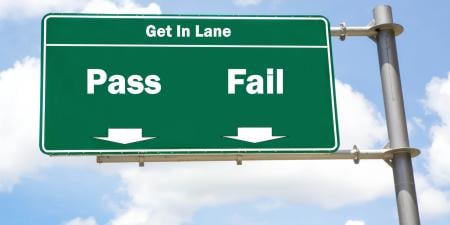Physicians have been practicing in a shift-work environment since the early days of medicine. What has changed is the recognition of how much shift work can degrade the physical and mental performance of physicians, with sleep deprivation in particular impairing not only patient care and safety but also physician health and safety.
The recent mandatory reduction in the work hours in residency was a first attempt to mitigate the effects of shift work and sleep deprivation on residents’ performance and education, but the costs and benefits of this reform continue to be hotly debated. The search for the “perfect” work schedule for physicians continues, and the challenges are abundant. The optimal balance between work hours on one hand and training and education on the other is unknown. The new regulations have raised concerns about the fragmentation of patient care and a breakdown in communication during shift changes. Once residents complete training, they move into a system without work hour restrictions. Depending on their specialty, their shift workload may be lighter or heavier than during residency.
A discussion of the effects of shift work on performance should start with a clear definition. Unfortunately, the definition is quite broad, which makes the interpretation of research studies and advice on management strategies more challenging. The American Academy of Sleep Medicine defines shift work as work that “is usually scheduled during the habitual hours of sleep…roster work, or irregular work hours” [1].
Not every physician on a shift-work schedule experiences the same decline of mental and physical performance; there is substantial individual variability in tolerance of shift work and sleep deprivation [2]. A subgroup of physicians experiences more severe effects known as shift-work sleep disorder. This condition is characterized by symptoms of insomnia or excessive sleepiness, either of which may lead to pronounced decline in performance [1]. A study of Detroit shift workers found that approximately 10 percent suffered from shift-work sleep disorder [3]. The exact percentage for physicians is not known. There is also strong evidence that tolerance to shift work decreases with age [4].
Detrimental Effects of Sleep Deprivation
Numerous studies have established the detrimental effects of sleep deprivation and fatigue on performance. Cognitive psychomotor performance after 24 hours of sleep deprivation is equivalent to that of someone who has a blood-alcohol level of 0.1 percent, well above the legal limit in the United States [5]. A comprehensive study in one of Harvard’s intensive care units demonstrated a 56 percent increase in nonintercepted medical errors and more than a 5-fold increase in diagnostic errors made by residents working a 77- to 81-hour work week compared to errors made by those working a 60- to 63-hour work week. (Interestingly, there were still 83 serious medication errors per 1,000 patient days, indicating the sleep deprivation was not the only factor contributing to serious medication errors and pointing toward the need for a systems-based error analysis.) Simulation studies in surgery residents have demonstrated significant declines in psychomotor and cognitive skills post-call [6].
Residents are at risk for drowsy driving and car crashes. A 1-year, web-based, monthly survey of interns showed their odds were 2.3 times greater for a crash and 5.9 times greater for a near-miss when driving home after shifts longer than 24 hours than when driving home after shifts that were not of extended duration [7].
Epidemiologic and laboratory studies strongly suggest increased risk for metabolic and cardiovascular disease in shift workers, and sleep deprivation has been associated with inflammation [8].
To understand the effects of shift work on the body and brain, it is important to review basic principles of normal sleep and sleep regulation. Sleep need is in part genetically determined [9]. Most people need 7 to 8 hours of sleep a night for optimal performance. A small percentage of the population can perform well with 6 hours of sleep or less, and a small percentage needs more than 10 hours. Many are not very good at knowing into which category they fall.
Mechanisms of Sleep Regulation
How does the brain know to sleep at night and how can it stay awake and alert during the day? The current model of sleep regulation proposes two forces, a homeostatic sleep drive and a circadian alerting signal that interact in a ying/yang fashion. Most of us know from experience that the sleep drive gets stronger the longer we have been awake. We may be less aware that the increasing “sleep debt” during wakefulness that eventually drives us to fall asleep is balanced during the day by the circadian alerting system’s push to stay awake. Once we fall asleep, we begin to pay off the debt—provided we sleep long enough. Circadian alerting is highest just before bedtime and lowest in the early morning hours.
The good news is that the two-force model of sleep and wake regulation works quite well when we maintain a regular, conventional schedule. The bad news is that the circadian system responds very slowly to abrupt changes in the daily wake/sleep schedule. Indeed, complete adjustment of the circadian rhythm is rare even in permanent night-shift workers [10]. The effects of acute or chronic sleep deprivation can only be reversed by obtaining adequate sleep.
The dilemma with shift work is that it affects both forces that regulate sleep. Long periods of wakefulness increase the sleep drive and can overwhelm the circadian alerting mechanism. So why not just work shorter periods but during the night? The problem here is that it takes many days to align the circadian phase to a new wake/sleep schedule. Even if full alignment is achieved, changing back to regular daylight schedule can be associated with symptoms similar to jet lag. Alternating day and night shifts for just a few nights in a row make it virtually impossible to adapt the circadian rhythm. Another complication is delayed sleep onset or poor quality sleep during off time due to circadian misalignment and environmental disturbances (e.g., light, young children).
Treatment Strategies
There are no treatments that mitigate all of the effects of shift work. It is critical to distinguish those individuals who meet criteria for shift-work sleep disorder because they might benefit from more aggressive interventions.
Treatment strategies aim at correcting the underlying circadian misalignment or sleep deprivation and sleepiness. The specific duration of individual shifts and the number of consecutive night shifts must be taken into account. Shifting the circadian clock would most likely not be beneficial in a work schedule that has single alternating day and night shifts or only a few night shifts in a row.
It is most important to keep the chronic sleep deficit as low as possible. Carrying a chronic sleep debt at the start of a shift-work rotation is like wearing heavy rubber boots for a marathon. Getting 7 to 8 hours of quality sleep on a call-free night is the key foundation for coping with shift work and on-call sleep deprivation. This is easier said than done for most physicians, given the demand to balance work and social life. Making sleep a priority during tough shift-work rotations and enrolling friends and family can help. The bedroom should have a comfortable temperature and be dark and quiet. Exercise and heavy meals should be avoided 2 hours before bedtime. Bedtime should be kept regular with a comforting routine. Alcohol should not be used as a sleep aid because it disrupts subsequent sleep and can lead to dependence.
Napping can be effective in mitigating some of the effects of circadian misalignment and sleep deprivation. It can either be done preventively with a 2 to 3 hour nap before a night shift or by taking shorter naps on the job. Naps as short as 10 minutes improve alertness and cognitive function [11]. Naps shorter than 20 to 30 minutes have a lower risk for inducing sleep inertia—an unpleasant, “dopey” sensation and various degrees of confusion upon awakening. Ideally, naps should be timed to coincide with dips in the circadian alerting signal, typically around 2 to 4 p.m. and 2 to 4 a.m. In practice, this is often difficult to achieve. There is no one-fits-all strategy, and experimentation with the timing and duration of the naps is needed to obtain the greatest benefit. But any amount of sleep is better than no sleep at all.
Treatment strategies aimed at shifting circadian rhythms have focused on appropriately timed exposure to bright light and melatonin administration. Light can act as a phase-shifting (circadian clock resetting) agent and, in addition, has alerting properties. The effect of light exposure depends on what time of the biological day it is given. Light in the morning sets the circadian clock to an earlier time, and light in the evening sets it to a later time. If the aim is to promote circadian adaptation to the night shift, it should be pointed out that bright light in the morning can inhibit inner-clock resetting, which usually occurs via a delay of the clock (i.e., shifting the biological night to a later time). Wearing dark goggles in the morning can lessen this effect and improve adaptation. Bright light during the night shift can help improve alertness and support phase shifting of the circadian system. The ideal light intensity, duration, and timing still have to be determined.
Melatonin is a powerful circadian drug. It has phase-shifting effects when taken in small doses (0.5 to 3 mg) at a specific time in relation to an individual’s endogenous melatonin rhythm. Laboratory studies suggest that melatonin may increase total sleep time and promote phase shifting. The evidence from field studies remains mixed.
Caffeine is well known for its alerting properties. Napping for 2.5 hours before the night shift and taking a 4 mg/kg dose of caffeine can improve alertness. Both interventions are effective individually but work best in combination [12]. Another strategy is the consumption of smaller amounts (0.3 mg/kg) of caffeine at hourly intervals during the night [13]. The stimulating effect of caffeine is strongest when it is used tactically for night shifts and not habitually during the daytime because tolerance develops with chronic use [12]. The individual physician should try a variety of strategies to find one that works best. Staying alert from caffeine, however, is no substitute for sleep.
The use of alertness-promoting agents and hypnotics is generally reserved for patients with true shift-work sleep disorder due to cost and side effects. Modafinil, the only FDA-approved drug for shift-work sleep disorder, modestly improved subjective ratings of sleepiness and objective measurements of sleep-onset latency in a clinical trial [14].
In summary, shift work will not go away for physicians. The effects of shift work on performance can be lessened but not fully eliminated. Good sleep habits and adequate sleep on call-free nights are the key foundation for coping with shift work. Tolerance to shift work and sleep deprivation varies among individuals. Medical students and residents should develop awareness for this. It might not be wise for someone with poor tolerance to shift work and sleep deprivation to choose a specialty that requires frequent night call.
References
- Van Dongen HP, Vitellaro KM, Dinges DF. Individual differences in adult human sleep and wakefulness: Leitmotif for a research agenda. Sleep. 2005;28(4):479-496.
- Drake CL, Roehrs T, Richardson G, Walsh JK, Roth T. Shift work sleep disorder: prevalence and consequences beyond that of symptomatic day workers. Sleep. 2004;27(8):1453-1462.
- Folkard S. Shift work, safety, and aging. Chronobiol Int. 2008;25(2):183-198.
-
Dawson D, Reid K. Fatigue, alcohol and performance impairment. Nature. 1997;388(6639):235.
- Kahol K, Leyba MJ, Deka M, et al. Effect of fatigue on psychomotor and cognitive skills. Am J Surg. 2008;195(2):195-204.
- Barger LK, Cade BE, Ayas NT, et al. Extended work shifts and the risk of motor vehicle crashes among interns. N Engl J Med. 2005;352(2):125-134.
- Mullington JM, Haack M, Toth M, Serrador JM, Meier-Ewert HK. Cardiovascular, inflammatory, and metabolic consequences of sleep deprivation. Prog Cardiovasc Dis. 2009;51(4):294-302.
-
American Academy of Sleep Medicine. The International Classification of Sleep Disorders: Diagnostic and Coding Manual. 2nd ed. Westchester, IL: American Academy of Sleep Medicine; 2006: 85.
- Dauvilliers Y, Maret S, Tafti M. Genetics of normal and pathological sleep in humans. Sleep Med Rev. 2005;9(2):91-100.
- Folkard S. Do permanent night workers show circadian adjustment? A review based on the endogenous melatonin rhythm. Chronobiol Int. 2008;25(2):215-224.
-
Brooks A, Lack L. A brief afternoon nap following nocturnal sleep restriction: which nap duration is most recuperative? Sleep. 2006;29(6):831-840.
- Schweitzer PK, Randazzo AC, Stone K, Erman M, Walsh JK. Laboratory and field studies of naps and caffeine as practical countermeasures for sleep-wake problems associated with night work. Sleep. 2006;9(1):39-50.
- Wyatt JK, Cajochen C, Ritz-De Cecco A, Czeisler CA, Dijk DJ. Low-dose repeated caffeine administration for circadian-phase-dependent performance degradation during extended wakefulness. Sleep. 2004;27(3):374-381.
- Czeisler CA, Walsh JK, Roth T, et al. Modafinil for excessive sleepiness associated with shift-work sleep disorder. N Engl J Med. 2005;353(5):476-486.



